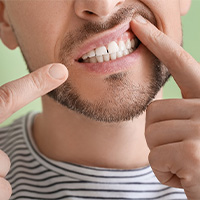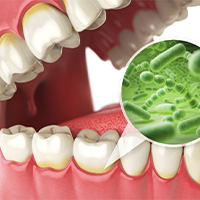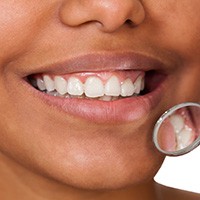 An estimated 80% of American adults
have some form of gum disease. It’s one of the most common oral health problems to exist, affecting over half
the population in the United States. While it’s extremely prevalent, it’s also easily preventable. At Moreno &
Young Dental, we have the skills and advanced techniques necessary to stop periodontal disease in its tracks. To
learn more about this condition and how we can take care of it with gum disease treatment in Bellingham,
continue reading or give our office a call
today!
An estimated 80% of American adults
have some form of gum disease. It’s one of the most common oral health problems to exist, affecting over half
the population in the United States. While it’s extremely prevalent, it’s also easily preventable. At Moreno &
Young Dental, we have the skills and advanced techniques necessary to stop periodontal disease in its tracks. To
learn more about this condition and how we can take care of it with gum disease treatment in Bellingham,
continue reading or give our office a call
today!

Commonly known as periodontal disease, gum disease is an infection of the gums and other tissues surrounding the teeth. It causes redness, inflammation, and even bleeding to occur when brushing or flossing.
Gum disease develops when there is plaque buildup on the teeth. When oral bacteria are left alone in the mouth, it forms plaque, which eventually hardens into tartar. Tartar can only be removed by a professional dental cleaning. Worse, the longer plaque and tartar exist on your teeth, the more harmful the bacteria become to your gums.
The good news is that gum disease can still be reversed in the early stages (gingivitis) with professional dental attention. If left to progress, it can spread beneath the gum line and create gum pockets that trap harmful bacteria and food particles. As a result, the infection can enter the bloodstream and leave you more vulnerable to health-related conditions, such as heart attack, stroke, diabetes, neurological disorders, and respiratory disease.

You might already need periodontal therapy, especially if you have:

It only takes 24 hours for bacteria to become dangerous enough to cause gum disease. With our gum disease treatment options in Bellingham, we’ll remove the plaque and tartar above and below the gum line. Let’s take a closer look at your available solutions:

In some cases, more frequent professional teeth cleanings are adequate to renew oral health, but many gum disease sufferers need a combination of two advanced therapies – scaling and root planing. Scaling is the systematic removal of plaque and tartar buildup. Root planing is a procedure that smooths tooth roots in order to prevent future buildup. Once completed, scaling and root planing significantly reduces a patient’s risk for the progression of gum disease to surrounding areas and prevents further dental damage.

Plaque buildup at and below the gum line leads to gum disease. One way we can help those who suffer from periodontal disease is to reduce the amount of plaque-producing bacteria present in the mouth. That’s why we often use Arestin antibiotic therapy as part of a periodontal therapy plan. This topical antibiotic can be placed following regular deep cleanings to keep teeth and gums healthier between periodontal maintenance appointments.

Don’t worry – there are many steps you can take to avoid gum disease or prevent it from coming back. Some of those include: